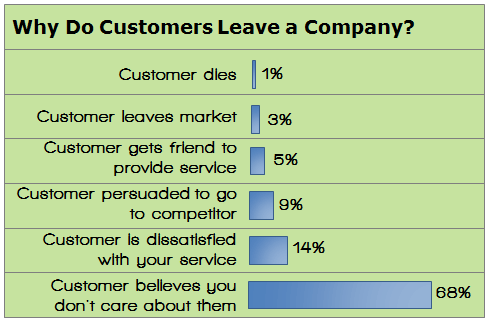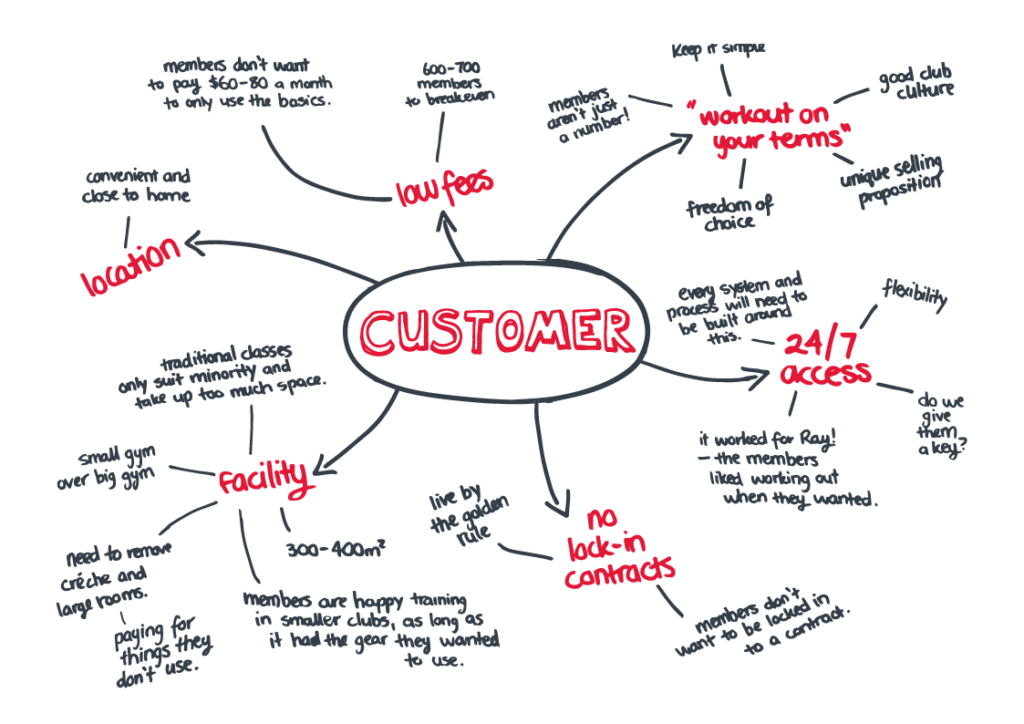Customer retention is an outcome not a strategy
Customer retention is an outcome not a strategy
The word ‘retention’ must be one of the most overused and misunderstood in the fitness industry. We have Retention Managers and retention strategies, we even have retention software that carefully runs algorithms through member usage data to try and determine the member’s risk of leaving. All of these retention-focused activities have good intentions but I can’t help thinking that somewhere along the way they miss the point.
In our frustrations to figure out how to keep members longer we have designed ways to manage and analyse the living day lights out of retention. This has resulted in us losing touch with what is most important; the very reason members choose to join a club over working out alone and something that we had in abundance in the old style gyms. I would call it the ‘care factor’.

You see, way back in the early days of our industry most gyms were owned by sole traders who were passionate about fitness and managed to get some cash together to open a gym. You would usually see this owner working out amongst the members, offering guidance and advice, spotting people and writing programs for their members. There were no charges for this service; it was all just given for free because the owner truly cared about members achieving goals. It’s sometimes useful to look back in history to see what really worked and how we might have drifted away from some of those gems that made us successful, even though we weren’t aware of it at the time.
Keep the customer at the centre of everything you do
Jetts Fitness is a large chain of 24/7 low cost gyms in Australia. Brendon Levenson, the founder, talks about that back in his day when he bought his first gym he discovered that the previous owner had given a number of members their own key to the gym so they could train whenever they iiked. The owner trusted his members that much, in turn they respected the club and they were rewarded with flexible use. That sparked an idea for Brendon that lead him to what we have today with the full access 24/7 gyms.He wrote down the word ‘Customer’ in the center of a page and then identified all of the things that frustrated them with the existing gym offerings, like lock-in contracts and high fees. He then built a business that removed all of these. When you put the customer at the center of everything you do you won’t go far wrong. Jetts Fitness now has over 200,000 members and over 250 gyms open across five countries.

Technology is there to support, not replace service
In our hurry to become more modern and utilise technology we are in danger of throwing the proverbial ‘baby out with the bath water’. Of course technology has its place in health and fitness, you only have to look at the array of wearable fitness technologies and apps now available to see it’s here to stay; it’s just that there are some things that can’t be delivered by technology. The care factor is something that happens from one human being to another; no technology can replace that.
Even the retention software solutions that predict usage patterns and risk of leaving don’t solve this issue. The staff member may well be interacting with a member but the issue is what motivated them to do it. If it was because they are being measured on their interactions or they are being rewarded financially, then the care factor is gone – care is something we do because we want to help someone, it can’t be faked or forced because members can tell.
As discussed earlier, the type of people now involved in health clubs are vastly different to what it was in the past – owners are often shareholders or worse venture capatilists, Club Managers are often sales people and the fitness staff and Personal Trainers are often marginalised to running the gym floor, cleaning the club and delivering orientations for the mountain of new members that are being pumped through the club with little involvement in helping members actually achieve their goals. The fitness staff turnover frequently, often due to their expectations of working in fitness not quite being met by the reality of working in a modern day gym.
Joining a health club is a big deal for most people; it’s a commitment for a start. That means that every time a member joins they have gone through some sort of consideration buying process. They have considered the location, the brand, the facilities and most importantly how they feel about the club. It’s important we don’t underestimate this because ultimately most of the decision is based upon the vibe they get from the club itself. This is also the reason why less than 10% of all memberships are sold online. There are just something’s that are hard to buy without experiencing them and a health club is one of these.
So where does the vibe of a club come from?
Well, anyone who has worked for a long time in fitness will tell you that they can rate the Club Manager within a few minutes of walking though the door. Why? Because you can pick up on the gym’s vibe and the gym’s vide is generated from the team. This energy is then in turn passed on to the members. If the team are happy and energetic they infect this into their environment and members pick up on it. Likewise, an unhappy team will do the opposite and negatively impact the club’s energy, creating low energy for members.
So we now know that everything to do with a club’s success is down to the people within it. It’s that simple, really. Get the team right and a club will, to a certain extent, take care of itself. Ok, it’s not quite that simple but it really is the first place to go to start building a successful club for yourself.

Commit to being loved by your people and in turn you will be loved by your customers.
Much research has been done to prove the connection between staff attrition and member attrition. It makes sense that if the team is happy then they will work harder to look after members. If they are unhappy, then they won’t; after all they can’t give what they don’t have. It is for this reason that many well-intentioned retention strategies fail because the team isn’t willing to run with the ball.
It is critical that before you even think about launching a retention strategy you are 100% convinced that you have the right people in place. So this isn’t anything you probably haven’t heard before, right? You’re probably thinking ‘well that’s all well and good but you can’t change out the whole team, how am I supposed to get them to be the right people?’
It’s worth the investment of time to build the right team. It’s not easy and will require you to make some tough decisions but the success of your club is so intrinsically linked to the people in it. It is a critical element to unlocking your club’s ultimate success. I have seen first hand how the engagement level of a team can directly impact a company’s results. I have seen great teams who were producing great results become disengaged teams performing poorly. The reason for this more often than not is usually to do with a company’s culture.
We can’t talk about people without looking at the importance of culture. I once heard culture described as ‘it’s just the way we do things’ I thought that was the best description for culture I had ever heard. That is because culture shows up in its people’s behaviours, not in what it intends to do or promotes in its recruitment brochure, but in its every day actions. Also culture is set by the leadership of a company; a company’s culture can only be as good as its leadership, this is so often a limiting factor for a company if the leadership has no clue about culture and how to cultivate a great one.
Before you can attract the right people into your company it’s critical that you set the culture of the company. This is easier to do if you own the business and a bit trickier if you are part of a chain or larger entity. Whatever your structure, I would still recommend you to go through this exercise and establish your club’s culture within the realms of what you can control.
So where to start when developing a culture?
Think about culture as the personality of your club. When parents raise a child they instill certain values and beliefs, often based upon what their own parents gave to them. These values and beliefs set the foundation to the child’s personality and how their behaviours will be defined over the rest of their life. A company’s values and beliefs are often set by the founder of a business, the one who nurtured it through those early years.
The values of Virgin businesses are all the same, regardless of which Virgin company they belong to. Virgin’s values are completely reflective of Richard and what he believes a business should stand for; challenge the norm, innovation, fun, excellent customer service and value for money. By understanding these values you can start to understand what the culture looks like within the company. This is why Virgin can create the same culture throughout all of its businesses all over the world; they are all built on the same platform of values.

These values create strong cornerstones that influence how people behave and perform everyday. When people go to work in a company that holds strong values and culture then the culture models the way the person behaves and it also influences the type of people who are attracted to work in the company in the first place. By having clear values that people understand it becomes a case of like attracting like, this helps to attract the right talent and to avoid a lot of issues through recruiting the wrong type of people.
The thing about culture is that every company has one, whether they choose to define it or not. Even without a clear definition of its values, companies exude a personality and these can be good, bad or indifferent. The most powerful influence into a company’s culture is its leadership. Even within the Virgin businesses, I have seen first hand what happens when the leadership is working against the values of a company. In order of importance; it’s effective leadership, core values and a compelling vision that sets a company up for cultural success.

So if your company is in need of some cultural TLC this blog should give you a good starting place. Culture is something that needs to be cultivated everyday, not once a year when the employee survey comes in. Take care of it and it will take care of you and don’t let your customers get to the point of being retained, get them to the point of loving what you do and their retention is an outcome of their loyalty.